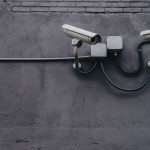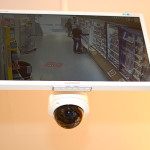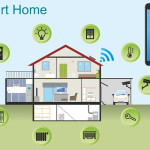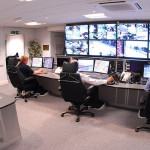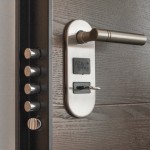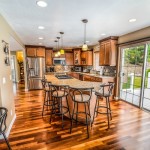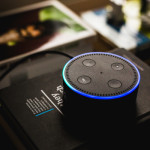SecurityCamExpert.com Wants To Thank You
Thanksgiving is upon us and we always feel so honored and blessed to have such loyal customers. We are happy to provide you with the best security camera systems and equipment, professional installation, and exceptional customer service because your security is our priority. We appreciate your continued support over the years and we wish you the best for this Thanksgiving holiday and always.
And remember, we will be closed on Thursday, November 23, 2017 and Friday, November 24, 2017, for the holiday. Our normal hours will resume on Monday, November 27, 2017. We apologize for any inconvenience this may cause and appreciate your understanding.
From the SecurityCamExpert.com family to yours, we hope you enjoy a Thanksgiving filled with love, happiness and good food. Please be safe over holiday weekend.
Why You Need IP Security Cameras
Security camera systems have made great advances over the years. From traditional analog CCTV technology to IP networking, security camera quality and features have improved to provide better monitoring and security. Some of these enhanced benefits include higher resolutions resulting in clearer images, fewer cameras covering larger areas, and thus, a lower total cost of ownership. Many businesses and homeowners are opting to trade up to network IP security cameras, network video recorders (NVRs) and cloud-based storage for more convenient and affordable security.
Network IP Cameras & Assisted Living Communities
Aside from protecting homes and company headquarters, assisted living communities can also reap the benefits of installing network IP security cameras.
In the way that security cameras deter burglars from targeting your property, in assisted living facilities, the aim is to deter abuse and neglect. By strategically placing these cameras in and around the facility, family members can put their worries at ease by reviewing stored footage to ensure that no mistreatment is taking place and that the staff is providing the proper care. For facility managers, video surveillance footage can provide evidence should an employee or resident be charged with abusive behavior.
Network IP cameras can also help the staff keep a closer eye on residents or patients. For those residents at risk for falls, staff can potentially prevent falls and injuries, or respond faster to those incidents. Medical equipment such as oxygen tubes may get dislodged, and staff can get to the rooms faster to fix the problems. In the case of memory units, the entrances and exits can be closely monitored to prevent residents from wandering outside of supervised areas, and can help protect the facility from possible intruders.
These security cameras can also prevent employee theft. Although we would rather think that this is uncommon, it is not unheard of for residents to report their belongings stolen. Whether these claims are accurate or not, cameras provide evidence to prove what really happened. Also, facilities often find that supplies may go missing. To counter these losses, IP cameras can document the incident or prevent it from occurring in the first place.
Of course, opponents of these security measures stand firm in their belief that it makes it more difficult to recruit staff and that employees will have trouble making sound decisions for fear of families challenging their actions. The problem with this stance is that numerous other careers and industries are under constant surveillance with little to no issues arising. Proponents of employee surveillance believe these measures will help workers to make better decisions and avoid any questionable situations.
Why Should You Upgrade To IP Security Cameras?
As stated, upgrading to IP security cameras comes with a myriad of enhanced benefits. Aside from the obvious video quality improvement, IP cameras are able to utilize your existing CAT5 or CAT6 Ethernet cabling, saving time and money on installation. The intelligent video features include facial recognition, motion detection, audio detection and people-counting, to name a few. Also, because they are connected to the Internet, owners are able to remotely view live video, search archived footage, and receive alerts via any PC, tablet, or smart phone.
Choosing the Right IP Security Camera
Because the various IP camera choices on the market, it can be a bit overwhelming. Here are some important features you should know about before choosing the best IP cameras for your needs.
- Camera Types
There are three design options for IP cameras: bullet, dome and PTZ (Pan, Tilt, Zoom). As inferred by their name, bullet cameras resemble a bullet shaped and best suited for directional monitoring. They typically do not possess the capability to zoom in or move. Dome cameras are shaped like domes and ambiguously monitor areas, aiding in its role of deterring misconduct. “Speed domes” spin quickly to capture a broader range of images. Lastly, PTZ cameras are ideal for covering large areas. These cameras can move and capture different angles, thus, delivering the work of several fixed-point cameras in one single device. PTZ surveillance cameras may also be preprogrammed to scan an area or may be controlled remotely.
- Resolution
IP camera resolution is the amount of visual data that can be captured and is measured in megapixels. It is often provided in horizontal and vertical pixel dimensions (ex. A camera that has 1280 x 1024 resolution is 1.3MP because 1280 x 1024 = 1,310,720 or 1.3MP). A higher resolution means the camera can capture more data, resulting in improved video clarity.
- Power over Ethernet (PoE)
This allows you to transmit power over the data cable, which can run up to 100 feet. This will save you money and decrease installation limitations. In addition, the PoE standard 802.3af supports higher power ratings needed for motorized cameras (ex. PTZ).
- Wide Dynamic Range
If you are monitoring an area that has challenging lighting conditions, you will want a camera that has good wide dynamic range (WDR). This will control the backlight and remove shadows to produce adequate footage in difficult environments.
- IR LED
Infrared (IR) LED lighting is like night vision, allowing cameras to capture clear footage in low to no light conditions. IP cameras can see infrared light and when wavelengths reflect back, it is as if the room is illuminated and the camera can record video. Night vision capabilities improve with more IRLEDs and longer ranges.
- Weather/Vandal Resistance
If you are using your surveillance cameras outdoors, be sure to choose weatherproof and “vandal resistant” cameras, which will often be IP66 rated and IK10 rated respectively. This will safeguard against water or dirt, which can interfere with your recordings or damage your equipment. Some cameras even offer thermostatic controls, which will help to prevent condensation forming over the lens.
When upgrading to IP cameras within your home, business, or in assisted living communities, be sure to evaluate your needs and review your options before making a final decision. If you need assistance, please feel free to call us at 888-203-6294 to speak with a representative and request a free quote. You may also visit SecurityCamExpert.com to browse our inventory of network IP cameras and surveillance equipment.
Connect with us on Facebook, Google+, Twitter, LinkedIn, and Pinterest for the latest news and updates!
Business Security Misconceptions
As a business, you want to provide a sense of security and safety for both your customers and employees. So long as you continue to provide secure transactions, and safeguard your property and assets around the clock, you afford your business the opportunity for continued success.
You can achieve this level of protection with the right business security camera system. Without a proper security system, you leave your business at risk for theft, vandalism, and other criminal acts. And statistics unfortunately show that businesses are more often targeted than homes.
A business security camera system tailored to your specific needs will improve security, provide evidence as needed, and may even lower your insurance premiums. Despite these benefits, businesses still put themselves at risk by either failing to invest in security cameras or choosing outdated security systems. These actions are often rooted in common misconceptions regarding security systems, such as these.
Myth: Security systems are too expensive.
While they may have had hefty price tags in the past, nowadays there are plenty of high quality and affordable security camera systems on the market. By opting for higher quality systems, you are less likely to encounter performance issues and costly repairs.
Also, the cost of security systems hardly compares to the cost of replacing stolen items. According to the U.S. Chamber of Commerce, employee theft alone costs an estimated $20 billion to $40 billion per year.
Myth: Any security system is better than no security system.
While shortcuts may be easier, installing dummy cameras or only a few real security cameras still leaves your business vulnerable. Areas may go unmonitored, allowing for any misconduct to go unnoticed.
And with an outdated security system, you may come across issues left and right. Inconsistent performance may mean that break-ins or incidents go undocumented, leaving you with no evidence.
Myth: It’s just too complicated to update your security system.
Some believe that upgrading and updating security systems may take too much time, money, and resources. However, with the right approach, it doesn’t have to be. Aside from updating your network, installation can be rather simple, especially if you hire a professional company. Informing your staff about the change and keeping them in the loop will help the process go smoothly and quickly as well.
If you are still hesitant about investing in a business security system, or have any questions, please feel free to contact us at 888-203-6294. Our representatives will be happy to assist you and provide you with a free quote. You may also browse our inventory online at SecurityCamExpert.com, and connect with us on Facebook, Google+, Twitter, LinkedIn, and Pinterest.
Smart Homes: Proceed With Caution
Some people may opt for traditional security cameras for home security, but the landscape is changing. The emergence of connected devices has spurred the popularity of smart homes and the Internet of Things (IoT). However, as we connect more technologies and devices, we may be putting ourselves at a greater risk.
Internet of Things
Most people have heard of the term, but those who haven’t may not even realize they are a part of it. Whether you own a smartphone, smart TV or even a tablet, you are connected to the Internet of Things. And if you are investing in smart home appliances, you are absolutely connected.
Because of this, smart homes tend to be more susceptible to threats thanks to the lax cybersecurity measures (if at all) of most smart appliances. Even if other devices, such as smart thermostats, garage doors, or fire alarms, may have stronger security measures, if they share the same network as other, less secure appliances they are vulnerable to exposure and attacks.
In order to protect users and their own reputations, smart appliance manufacturers must take cybersecurity measures seriously. For your own safety, research the products you are interested in and be sure that their security measures meet or exceed your expectations.
Basic Security
One of the main problems with smart security technology is the do-it-yourself approach. Most consumers are drawn to DIY solutions because they seem to be more cost-effective, user-friendly, and cut out the need for professional installation. Unfortunately, mistakes made by the user could further compromise their security.
While these smart technologies indeed promote security and convenience, you may want to tread lightly. Consider the pros and cons of transitioning your home into a smart home and be sure to do your research and take the necessary precautions to ensure that your devices and systems are as secure and up-to-date as possible.
If you are weary of these smart security measures, you can always go the traditional route with security cameras and CCTV surveillance systems. Visit SecurityCamExpert.com to shop our selection or call 888-203-6294 for more information and a free quote! You can also find us on Facebook, Google+, Twitter, LinkedIn, and Pinterest.
Stay Safe This Halloween
When you think of Halloween, fun things like candy and costumes come to mind. But Halloween is also a dangerous night, as both vehicle and pedestrian traffic increases. Vigilance and early planning can help to ensure safety.
If you have surveillance cameras, they can help give you a sense of security and deter bad behavior. Before Halloween night, be sure that your security cameras are working properly. If you are out trick-or-treating or at a party, you can access your live feed to ensure that your property is safe. If you are at home, you can see when trick-or-treaters approach while monitoring for mischievous behavior or vandalism.
Below are more Halloween safety tips to keep your kids and loved ones safe.
- Avoid oversized costumes or costumes with excessive flowing fabric, such as capes or long sleeves. These pose a risk as loose clothing can graze a jack-o-lantern or open flame. Also, oversized costumes can cause kids to trip and fall. Be sure that costumes fit appropriately and check to see that shoelaces are tied before heading out.
- If possible, choose a brightly colored costume that drivers can spot easily. You can also use reflective tape or stickers, glow sticks or flashlights to increase visibility.
- Face paint and makeup are a safer choice than masks, which may obstruct vision. If a mask is worn, make sure that it fits properly and securely, and whenever possible, cut large eye holes.
- Inspect the treats. Anything that is tampered with, has loose wrappers, or just doesn’t seem right should be disposed. Also, homemade treats should be trashed, unless you know the person who gave it to your child and are sure that it is safe.
- Children under the age of 13 should always be supervised by an adult. Older teens should trick-or-treat in groups and have a set curfew. Creating a route ahead of time will help to keep track of your kids as well.
- Walk slowly. As with any other night, be mindful of cars and make eye contact with drivers. Always walk on sidewalks and cross at the crosswalks or traffic signals. If there are no sidewalks, then it is strongly advised to walk facing traffic and as far to the left as possible.
- Children should only go to well-lit houses and remain on the porch within street view. Also, remind children to never cross between parked cars and to look both ways before crossing.
- Drivers: back out slowly while keeping a watchful eye for children. High times for trick-or-treating are usually from 5:30pm-9:30pm. Distracted driving is dangerous and illegal, on Halloween and every day. If you must, pull over and park in a safe location, otherwise, it can wait.
Share your own Halloween safety tips with your peers and us on Facebook, Google+, Twitter, LinkedIn and Pinterest!
Visit SecurityCamExpert.com to browse our vast collection of quality security cameras and CCTV surveillance system packages. If you have any questions or would like to request a free quote, please feel free to call 888-203-6294.
Artificial Intelligence For Video Surveillance
There’s no denying that video surveillance technology has come a long way over the years. From grainy videos in its early stages to the quality software and clarity today, video surveillance continues to make great strides and advancements.
History
The goal of security cameras and surveillance systems is to capture, detect, and deter any unlawful behavior in and around homes, businesses, and public areas. Before, installing a security camera system was a costly and laborious job, involving lots of wires and cables running throughout the building. As technology progressed, security cameras became more accessible and affordable, allowing more users the opportunity to invest in their security. Now there are numerous DIY solutions that make it easy for homeowners to install and set up on their own security systems.
For businesses, implementing a team of people to actively monitor security cameras at all times was once the only option. Now, much of the monitoring aspect of security and surveillance systems can be automated. Rather than having the mundane task of watching numerous monitors, security cameras now have the ability to detect any suspicious or abnormal behaviors and will alert a security officer as necessary.
While we have seen the security industry flourish over the years, this is just the tip of the iceberg. Our technology will continue to advance and amaze us in ways we never thought possible.
Artificial Intelligence
Artificial intelligence (AI) in video surveillance enables the “smart” features we now see with security cameras. In general, security cameras enable us to monitor situations in real-time or go back to review previous footage. With the integration of AI technology, not only can we monitor in real-time, but potential issues can be identified before they become real problems.
With the emergence of video analytics, footage can be analyzed immediately to identify any abnormal activity or threats early on. This technology helps the software ‘learn’ what is normal in order to identify unusual behavior and is meant to make up for human error, rather than replace human monitoring all together.
While it was always a goal to integrate AI and video surveillance, the technology, from a hardware standpoint, was not ready. One of the issues that needed to be addressed was decreasing the power demand to a level low enough that would allow the technology to be embedded into the cameras.
As more cameras emerge with new AI technologies and processes, we will begin to see more advanced features including crowd density monitoring, facial recognition, stereoscopic vision, and behavior analysis.
Behavior analysis in particular is what a lot of tech companies are focusing on. By implementing a technology that can identify and recognize precursor patterns associated with crimes and other bad behavior, we may be able to greatly improve public safety and security.
A great example comes from the West Japan Railway, where it was found that 60% of people hit by trains in Japan were intoxicated. They have now installed security cameras that can automatically search for and detect signs of intoxication. Sleeping on benches, stumbling, falling, or standing motionless for long periods of time are behaviors that are recognized by the AI system. Human attendees are then notified and sent to check on the person.
Of course, a conversation about video surveillance always includes concerns about privacy. No one wants to feel like they are constantly being monitored, but developers insist that these systems know when to stop collecting information and monitoring. As these technologies continue to develop, you may soon be able to “teach” your system when to record and in which situations recording should halt.
Although it is still in its early stages, AI technology and video surveillance is heading in a positive and exciting direction. Mass adoption may still be a ways to go, but it’s great to see AI being applied in a new setting.
What are your thoughts on artificial intelligence and the video surveillance industry? Share with us on Facebook, Google+, Twitter, LinkedIn, and Pinterest. Browse our selection of security cameras and equipment online at SecurityCamExpert.com. To learn more about our installation services or to request a free quote, please call 888-203-6294.
Home Security Tools
A comprehensive security and alarm system for your home will help to keep you safe and give you peace of mind while you’re away. If you already have a home security system in place, it is likely that you are familiar with the different devices and security lingo. For those of you who are considering installing a security system, here are a few of the basics you should know about.
Control Panel
This is the component that communicates with all other devices in your system and also connects you to your alarm monitoring company. It is usually a touchpad in which you enter passcodes to arm and disarm your alarm, and is often considered the heart of your system. Some advanced systems enable voice control for the control panel.
Key Fob
Instead of the touchpad, a key fob allows you to arm and disarm your alarm upon exiting and before entering your home, similar to a remote car lock. These may be used at home or remotely. Depending on how many people are living with you or need access to your home, your provider should be able to accommodate the number of key fobs necessary.
Motion Sensors
These are often referred to as motion detectors and communicate with the control panel to let them know when there is movement. Motion sensors are installed on doors and windows, and when the sensors are touching it is noted as secure. If a door or window is opened while the system is on, the sensor is triggered and communicates the activity to the control panel.
Security Cameras
Keep a close eye on everything whether you’re home or away. There are various types of security cameras to suit your needs including Pan/Tilt/Zoom, dome, bullet, day & night vision, and more. In conjunction with a corresponding app, Internet Protocol (IP) cameras can record activity when detected and send you an alert along with footage.
Electric Door Locks
Have you ever been at work or out on the town and wondered whether you remembered to lock the door? Electronic door locks can let you rest easy. You can check your locks remotely, and some even allow you to lock and unlock them remotely via a smartphone app. That way if your kids forget their keys, or you absentmindedly left the door unlocked, you can easily fix the situation.
Panic Button or Pendant
This wearable device is a popular add-on that allows a direct connection with the monitoring company to alert them when help is needed. By pressing the panic button, the monitoring company can communicate with the user and send the necessary emergency personnel. For those who have elderly loved ones living alone, this is a smart device to invest in for them.
If you have any questions about security cameras or surveillance systems, please feel free to contact us at 888-203-6294 or visit us online at SecurityCamExpert.com to browse our stock. You can also find us on Facebook, Google+, Twitter, LinkedIn, and Pinterest.
Indoor Security Tips
Security cameras placed outdoors allow you to monitor your property while acting as a deterrent for trespassing. But what happens if criminals proceed anyways?
Indoor security cameras will show you what happens when the intruders get in. Should theft or damage occur, you are left with video evidence of the crimes to assist in capturing the criminals.
For everyday use, indoor security cameras help to monitor daily activities, such as kids returning home from school, or checking in on pets while you’re at work.
While there are several benefits of indoor cameras, it may be difficult discerning the most effective places to install them. Here are some helpful tips for choosing the best locations for your indoor security cameras.
Statistics show that the most common entry points for burglars are through first-floor doors or windows, thus, your main entrances should be your top priorities. The front door, back door, garage door, and other first-floor exterior doors and windows should be equipped with some type of security (ex. locks). If possible, installing security cameras to cover all of these spots would be ideal.
- One of the most common places for an indoor security camera is in a high traffic area that provides coverage for as many areas as possible. Try to find the right angle and placement for a camera that will give a bird’s eye view of the larger area. For example, the family room may have views of the kitchen, back door, garage door entrance, and possibly even the front door.
- For larger homes or homes with a second or third story, additional security cameras may be necessary to sufficiently cover the interior of the home. Expansive one story homes may need multiple cameras to cover different rooms and entrances, while multiple story homes may need more cameras to cover each level.
- If an extensive security camera system does not fit within your budget, choose key areas that are highly targeted by burglars and install cameras there. For example, the family room often houses expensive televisions and electronics. Or if you have a family safe, you can place a camera in that room for added security.
- Once you have chosen the locations for your cameras, be sure to install them out of reach. Not only will this help to get a better view, but it will also help to prevent any damage of theft. If your security cameras are easily accessible, burglars may destroy them to eliminate evidence, or possibly steal them.
Share your indoor security camera tips with us on Facebook, Google+, Twitter, LinkedIn, and Pinterest today!
For a great selection on indoor security cameras and more, visit SecurityCamExpert.com. For more information on site surveys and our installation services, please call 888-203-6294.
Protect Your Vacant Property
Think an empty building doesn’t need maintenance or security? Think again. Unoccupied buildings tend to be more susceptible to damage and criminal activity than those filled with expensive equipment. If your property will be vacant, whether long or short term, you should secure it as soon as possible.
Main Risks For Empty Buildings
- Weather
We all know that weather can cause significant damage relatively quickly, especially for buildings in areas known for inclement weather. Damage to the exterior, including the roof and windows, can also make its way inside to cause further problems.
- Thieves
If you leave equipment or anything of value in an unsecured building, you run a high risk of theft. Even if you’ve emptied the property, thieves may still enter and steal valuable construction materials (ex. copper pines or wires).
- Vandals
Even though you may have cleared out your property, you are still at risk for vandalism. Vandals may trash your property by leaving waste, breaking things, and covering walls in graffiti.
- Trespassing
This covers a number of threats, which include squatting and illicit activities.
How To Secure Your Vacant Property
- Secure Entrances
Before vacating a property, be sure that all windows and doors are properly closed and locked. Look for gaps or damage to the frames that may allow wind, rain, or intruders to get in.
If you plan on leaving for an extended period of time, you should consider investing in stronger methods of securing doors and windows. While traditional wood boarding may be cost-effective, these have also added to the blaze of an arson attack. Investing in a metal alternative may be a better choice. You may also want to consider steel security doors which make it impossible to access your building without special equipment.
- Maintain Exteriors
Any loose objects can be stolen, used to gain entry, or used as a weapon. For example, bins, palettes and spare construction materials can quickly turn into projectiles in the wrong hands, or can be picked up by high winds in a storm. Be sure to store large objects indoors or out of sight.
Landscaping may be an afterthought, but can make a difference. You should keep pathways clear of debris, such as snow and ice in the winter, and trim grass and hedges to deter vermin from inhabiting your yard. Landscaping also makes it appear that the premise is occupied, making it less of a target.
- Check The Alarms
A security alarm is a necessity. A security alarm system can deter intruders, and, if linked to the local police, can elicit immediate response to any incidents. If you vacate your building, be sure to check your system regularly to ensure that it is functioning properly. If your system is managed by a third party, be sure to inform them of your absence.
Because a fire, whether intentional or accidental, is always possible, you should also maintain your fire alarm and sprinkler system. Be sure that pipes and sensors remain functional.
- Increase Passive Security
While dummy cameras can be a reasonable deterrent for those on a budget, operational security cameras may be a better investment. If you plan on leaving your property vacant for a longer period, you may want a real security camera to record any trespassers or criminal activity that occurs while you’re gone.
It may behoove you to make your property physically harder to access, especially if you have open spaces. Fencing and gates with proper locks and concrete barriers are effective ways to keep intruders out.
- Hire Active Security
If you will be storing valuable equipment and materials on site during your absence, you may want to hire professional guard control or even guard dogs and handlers. You can schedule the guard to check on your building at random times to keep trespassers away and to report any unusual activity.
If a building is scheduled for future renovation or demolition, registering your building for a guardianship scheme could be a more cost-effective solution. While you won’t be able to freely access your building when the guards are there, but it will safeguard against trespassers and squatters.
How do you protect your vacant property? Share your tips on Facebook, Google+, Twitter, LinkedIn, and Pinterest.
Find quality security cameras and CCTV surveillance systems when you shop at SecurityCamExpert.com! Visit us online or call 888-203-6294 to learn more about our services, including installation and support.
Connected Technology
Smart home technology – what once was a pipe dream is now coming to fruition. Technically referred to as home automation technology, it is comprised of computer devices that work together to manage various features in your home which would normally be controlled manually. Common examples include remotely controlling lights, thermostats, and even locking and unlocking doors.
As the demand for smart home technology continues to grow, it is important to understand how the technology works and develops to suit our growing needs and wants.
Internet of Things
Smart home technology thrives off of internet connectivity. More and more manufacturers are integrating Wi-Fi enabled remote controls into their products, enabling connection to your wireless home network and thus advancing the development of a “smart” network of appliances known as the Internet of Things (IoT).
Although more people refer to this as “smart technology” rather than IoT, the latter does address the very heart of the draw – the ability to control these devices remotely over the internet, no matter how far the distance.
Smart Security
One of the first places we saw widespread use of smart technologies was in home security systems by way of Internet-accessible security cameras. These security cameras allow homeowners to keep an eye on their property while they are away. As technology advanced, these became more compact and affordable, further spreading their use for home security.
Aside from cameras, more smart security devices emerged and included Wi-Fi enabled electronic deadbolts to remotely grant access to your home, smart lamps to control lighting to ensure you no longer enter a darkened home and smart thermostats to save energy and provide climate-control for a comfortable environment.
Entertainment & More
Security was not the only thing to benefit from IoT. Connected devices can now be found in the kitchen, with smart refrigerators that can remind you when you need to hit the grocery store and smart ovens that allow you to monitor your foods while they cook.
In terms of entertainment, web-enabled televisions can stream digital media content directly to the screen while being controlled by a mobile phone or tablet. Smart devices like Google Home or Amazon Echo can be given verbal commands to control nearly every aspect of your smart home.
As this technology continues to develop, what would you like to see? Share with us on Facebook, Google+, Twitter, LinkedIn, and Pinterest today!
Keep an eye on your home or business with our selection of quality CCTV security cameras and surveillance system packages. Visit us online or call 888-203-6294 to request a free quote or site survey today!

